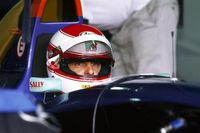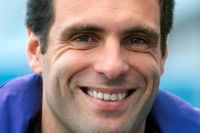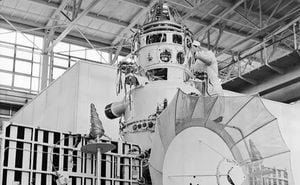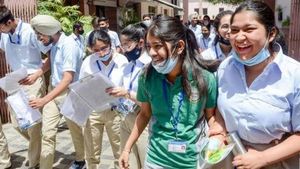As the motorsport world pauses to reflect on the tragic events of April 30, 1994, the memories of Roland Ratzenberger’s fatal crash during qualifying for the San Marino Grand Prix at Imola remain painfully vivid. This day marks 31 years since the loss of the 33-year-old Austrian driver, whose promising career was cut tragically short while driving for the underfunded Simtek team. Ratzenberger’s accident was not just a personal tragedy; it was a pivotal moment that sent shockwaves through the entire Formula 1 community.
Roland Ratzenberger was not a household name in Formula 1, having entered the sport relatively late in his career. He had faced numerous challenges in his journey to the pinnacle of motorsport, including financial struggles and the fierce competition of the sport. However, his determination and charm made him a beloved figure in the paddock. Ratzenberger’s story was one of resilience, as he had fought hard to earn his place on the grid, and his presence was a testament to the dream of racing.
During the fateful weekend at Imola, Ratzenberger was battling for position in qualifying, vying for the 26th and final grid slot against Paul Belmondo. On the morning of April 30, he had shown promise, improving his lap time from the previous day. Unfortunately, as he approached the Variante Villeneuve at a high speed of 308 km/h, disaster struck. The left flap of his front wing detached, leading to a catastrophic loss of control. Ratzenberger’s Simtek slammed into the concrete barrier, resulting in an impact that registered a staggering 500Gs, the highest ever recorded in Formula 1 history.
The scene was harrowing. Eyewitness accounts described Ratzenberger’s helmeted head slumped and motionless in the wreckage, a chilling indication of the severity of the crash. Medical personnel, including the renowned Professor Sid Watkins, rushed to the scene, but despite their efforts, Ratzenberger was pronounced dead shortly after being airlifted to Maggiore Hospital in Bologna. The news of his passing sent shockwaves through the paddock, marking the first fatality in Formula 1 in over a decade.
What made this weekend even more tragic was that it was not an isolated incident. Just one day prior, Brazilian driver Rubens Barrichello had survived a horrific crash during practice, sustaining serious injuries but ultimately escaping with his life. The juxtaposition of these two events highlighted the inherent dangers of the sport, raising questions about safety measures and the risks drivers face on the track.
In the wake of Ratzenberger’s death, the San Marino Grand Prix weekend continued, but the atmosphere was somber. Ayrton Senna, a three-time world champion and one of the sport's biggest stars, was profoundly affected by the loss of his fellow driver. In a poignant tribute, Senna carried an Austrian flag in his cockpit, intending to wave it in honor of Ratzenberger after the race. Tragically, fate had other plans. Just hours after Ratzenberger’s death, Senna himself succumbed to fatal injuries following a crash at the Tamburello corner during the race. The loss of two drivers in one weekend marked one of the darkest chapters in Formula 1 history.
The events at Imola in 1994 prompted a significant reevaluation of safety standards in Formula 1. While the sport had made strides in driver safety over the years, the tragic incidents served as a wake-up call, leading to the implementation of more stringent regulations and safety measures. The introduction of the Halo device, among other advancements, has since been credited with saving numerous lives in the years following these tragedies.
Roland Ratzenberger’s legacy lives on, not just as a cautionary tale but as a reminder of the human spirit and the pursuit of dreams in the face of adversity. His family, including parents Rudi and Margit, have worked tirelessly to keep his memory alive, sharing stories of his passion for racing and the joy he brought to those around him. They remember a son who was dedicated to his craft, who had a deep love for motorsport, and who dreamed of making his mark in the world of racing.
As we reflect on the legacy of Roland Ratzenberger, it is crucial to honor not just his memory but also the lessons learned from that tragic weekend. The sport has come a long way since 1994, but the dangers remain ever-present. Each race serves as a reminder of the risks drivers take as they push the limits of speed and skill, and it is the responsibility of everyone involved in motorsport to continue advocating for safety and the well-being of the athletes.
In conclusion, as April turns to May, the motorsport community pauses to remember the lives lost at Imola in 1994. Roland Ratzenberger and Ayrton Senna are forever etched in the annals of Formula 1 history, their stories serving as both a tribute to their passion and a call to action for the ongoing pursuit of safety in the sport.






